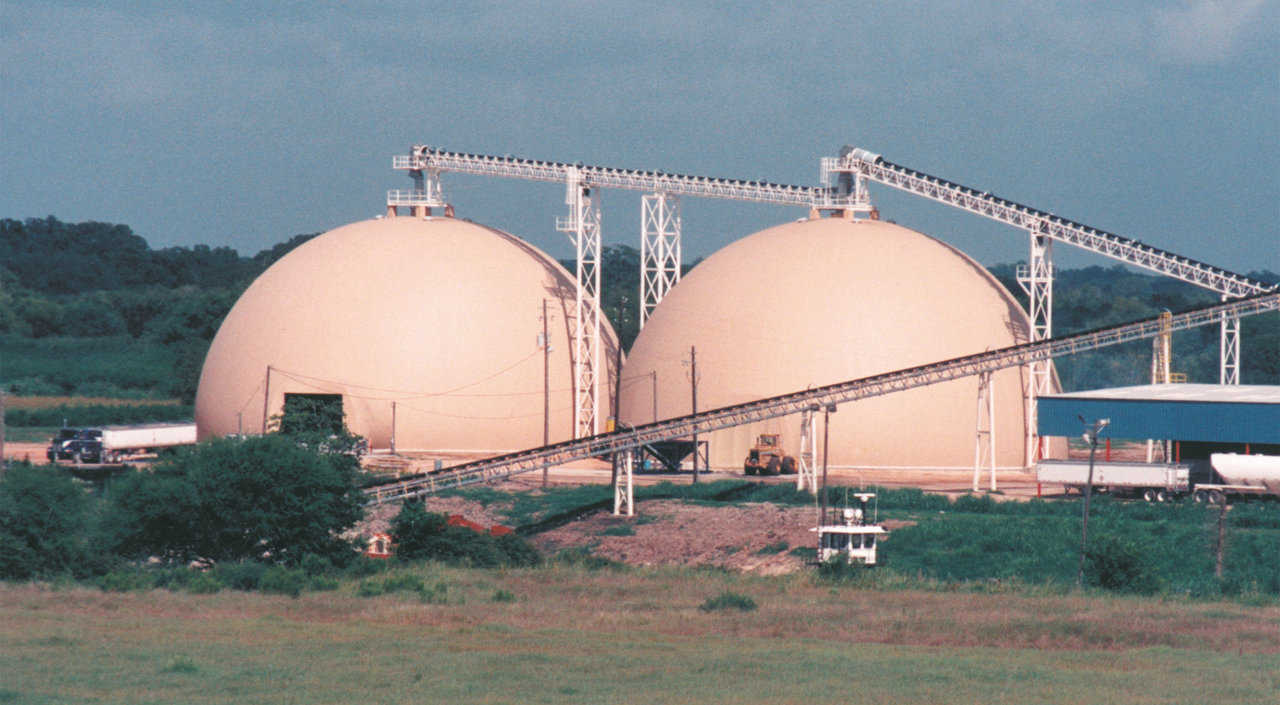Operating in a hurricane zone
“We are in a hurricane zone here,” said Doug Stevens, owner of Equalizer, Inc., headquartered in Port of Victoria, Texas.
Port of Victoria is on the Channel to Victoria, a 34-mile long, 100-foot wide, 9-foot deep, winding canal, linking Port of Victoria with the Gulf Intracoastal Waterway and ports around the world.
Since the fiercest hurricane on record to hit the U.S. blasted the Texas coast in 1900, Equalizer’s location certainly is in a hurricane zone. That hurricane-proneness was one of the main reasons Equalizer decided on Monolithic Domes for the storage of their two products: ammonium nitrate and diammonium phosphate.
“We are primarily a corporation that provides distribution services for liquid and dry bulk fertilizer manufacturers, both domestic and international,” Stevens said. Consequently, appropriate storage of the fertilizer products is vital to Equalizer’s operation.
Equalizer’s Monolithic Domes
In April 1999, Dome Technology, Inc. of Idaho Falls, Idaho completed two Monolithic Dome storages, each with a diameter of 130 feet and a height of 70 feet for Equalizer. The fertilizer products, in granular form, are barged, usually from the lower Mississippi region to Equalizer’s facility via the Victoria Barge Canal. Heavy equipment then moves the product off the barge and onto a conveyor belt leading into a Monolithic Dome for storage. From there, it’s retrieved and transported to Equalizer’s customers.
At this point, the domes have operated for less than a year. Still, Equalizer is pleased with their performance. “We were considering other types of structures,” Stevens said. “Another A-frame structure, made of wood and concrete, was considered. But it would be harder to control humidity in it.”
Controlling the humidity
According to Stevens, controlling the humidity in an ammonium nitrate storage building is of prime importance. He said, “Ammonium nitrate is a hygroscopic product – sucks moisture out of the air. Moisture breaks down the granules, so we’ve installed a dehumidifier inside the domes. The temperature could be in the mid 90s, but the humidity or moisture must be removed from the air inside the domes.”
Because of its airtightness, Equalizer knew that controlling the humidity in a Monolithic Dome would be easier. “And overall,” Stevens said, “the dome concept is more affordable.”
According to plan
Stevens, who appointed himself general contractor and personally oversaw the construction of both domes, said, “It went as planned. We had no major disasters or setbacks. The boys from Dome Technology did an outstanding job. The second Airform snagged and tore; but they were able to repair it so it was aesthetically pleasing.”
These were the first Monolithic Domes built for Equalizer, but very possibly not the last. “We’re pleased with the domes,” Stevens said. “It’s a very impressive looking facility.”
Note: Reprinted from the Roundup, Spring 2000
